How to use edible flowers: top tips for picking, preparing, and cooking with beautiful blooms
Our guide on how to use edible flowers will help you add color, flavor, and texture to sweet and savory foods

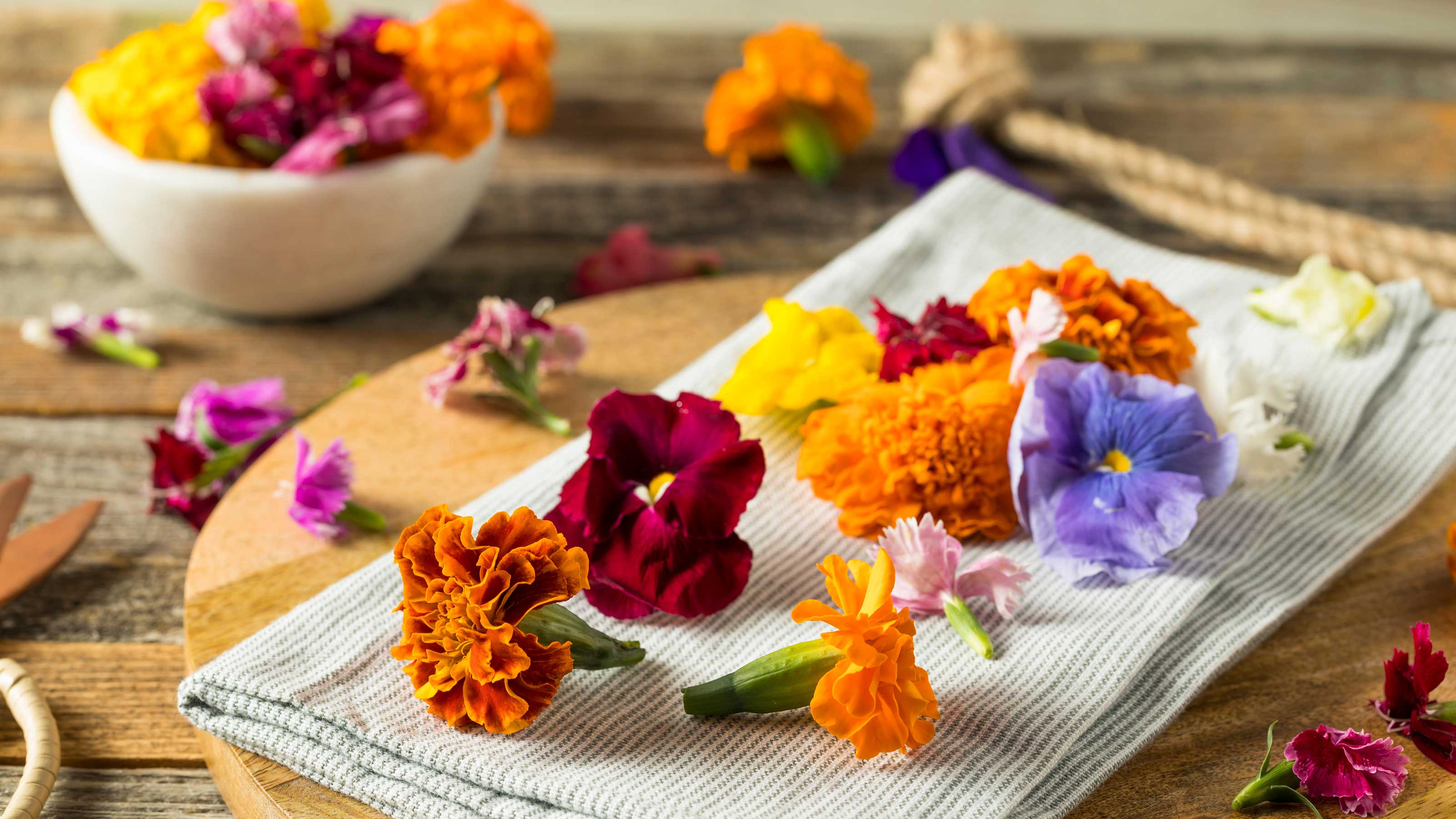
This guide on how to use edible flowers is for you if you want to take your kitchen creations up a level.
Edible flowers don't just look pretty, they bring a wide range of delicious flavors to all manner of meals. And although they're having a fashionable moment, the use of flowers in cooking goes back thousands of years.
Chinese cooks used petals in 3000BC, and the Romans added mallow, violets, and roses to their famously extravagant feasts. In the Victorian era, candied florals were used to flavor and decorate cakes, pastries, and desserts. And nowadays, edible flowers are widely used to create fresh, modern flavors in both savory and sweet dishes – and no episode of Bake Off or MasterChef is complete without them.
It's easy to start growing and using your own edible flowers – you could even base some of your flower bed ideas around them. But of course, safety rules apply – always check very carefully that your chosen flower is edible (pretty definitely doesn't always mean palatable).
Whether you're an edible-flower novice or have been dabbling in floral feasts for a while, our advice on how to use edible flowers is sure to come in handy.
Learn how to use edible flowers and instantly elevate your meals
Growing and harvesting perennial and annual flowers to add to culinary creations could not be simpler. Even better, some of the easiest-to-grow edible flowers offer the biggest, boldest flavors and the most vibrant splashes of color.
Pot marigolds, with their peppery taste, can be grown as part of your container gardening ideas from a single pinch of seed scattered on the soil. Meanwhile, glorious orange and ruby red nasturtiums are one of the simplest annuals to raise – and every single part of the plant can be eaten.
Add to the list cornflowers, honeysuckle, pinks, hollyhocks, bee balm, lilac, sunflowers, forget-me-nots, dahlias, and chrysanthemums and you have a rainbow cutting garden and a complete floral larder in one. An extra bonus is that all of these are bee-friendly plants and will attract beneficial insects to the garden.
Eating flowers can be very simple: a few bright-orange calendula petals tossed into a salad or a scattering of thyme flowers atop a pasta dish, for instance. Or, it can be a lot more involved: from cornflower petals added to pasta dough to lollipops made with violas. At parties, cucumber-flavored borage flowers can be set into ice cubes and rose syrup is delicious stirred into cocktails. Edible flowers can also be used to give depth of flavor to fish, soups, omelets, and meat dishes, or churned into butter or ice cream.
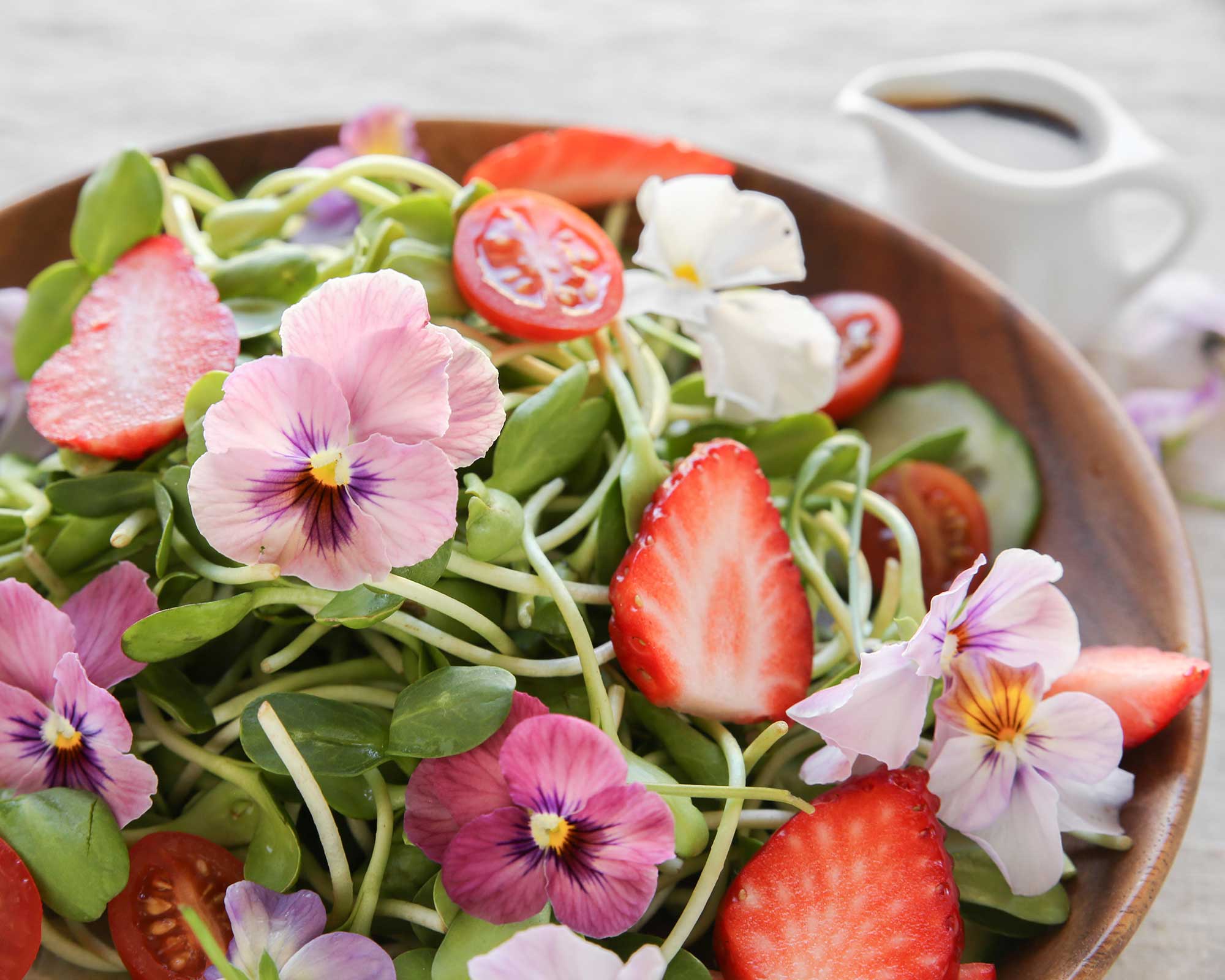
Here are some of Amateur Gardening's fruit-and-veg-expert Lucy Chamberlain's favorite ways to use them:
- Crystallized: Using crystallized flowers to adorn the top of a fluffy Victoria sandwich or beautify the side of a summer fruit dessert plate is an utter indulgence, says Lucy. The technique works particularly well for rose, viola, and dianthus petals. You can find more info on how to crystallize flowers below.
- Battered: 'Make a light tempura-style batter, dip flowers in, and deep or shallow-fry in oil. Elderflower fritters have a delicious perfume,' says Lucy. She has also tried malva flower fritters, she says, and courgette blooms stuffed with herby soft cheese. You can learn how to grow courgettes with our useful guide.
- Ice cubes: This is 'a great way to introduce newcomers to edible flowers,' says Lucy. 'I made frozen borage flowers for our wedding guests’ drinks which looked lovely. Violas look great, too. Simply place in an ice cube tray, add water, and freeze.' A perfect addition to stylish outdoor bar ideas for summer entertaining.
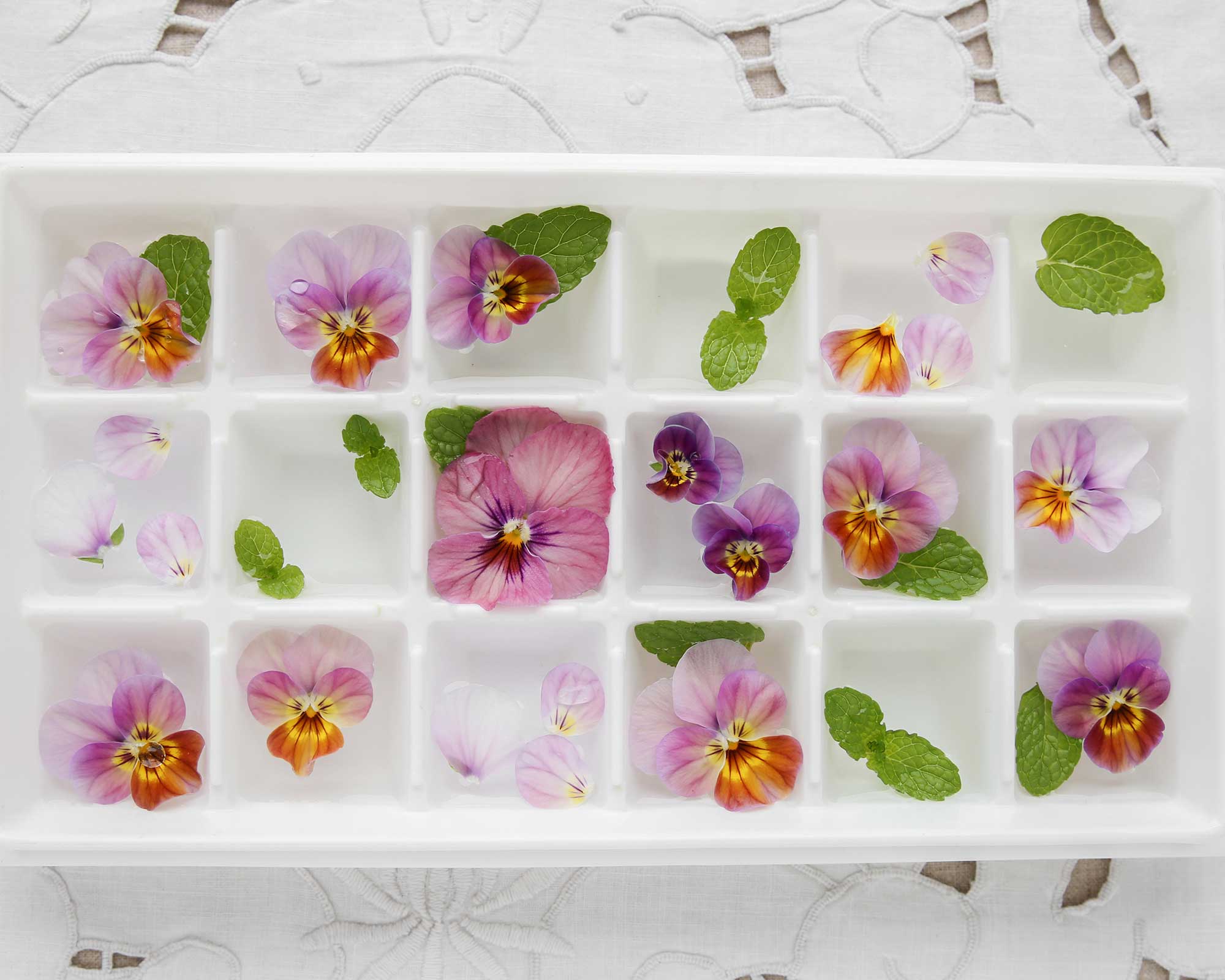
How to make crystallized edible flowers
Petals will last longer if they are crystallized: a simple process which means you can add the flowers to a cake, biscuits, or dessert without worrying about them wilting or shriveling up. They're easy to create and will give any dessert the wow factor.
Here's how to do it:
- Whisk up egg whites to stiff peaks.
- Use a fine paintbrush to apply the egg white onto the petals.
- Sprinkle caster sugar on both sides, and place on a lined baking tray to dry for a couple of hours.
- You may need to use tweezers to move the flowers if they are small and delicate.
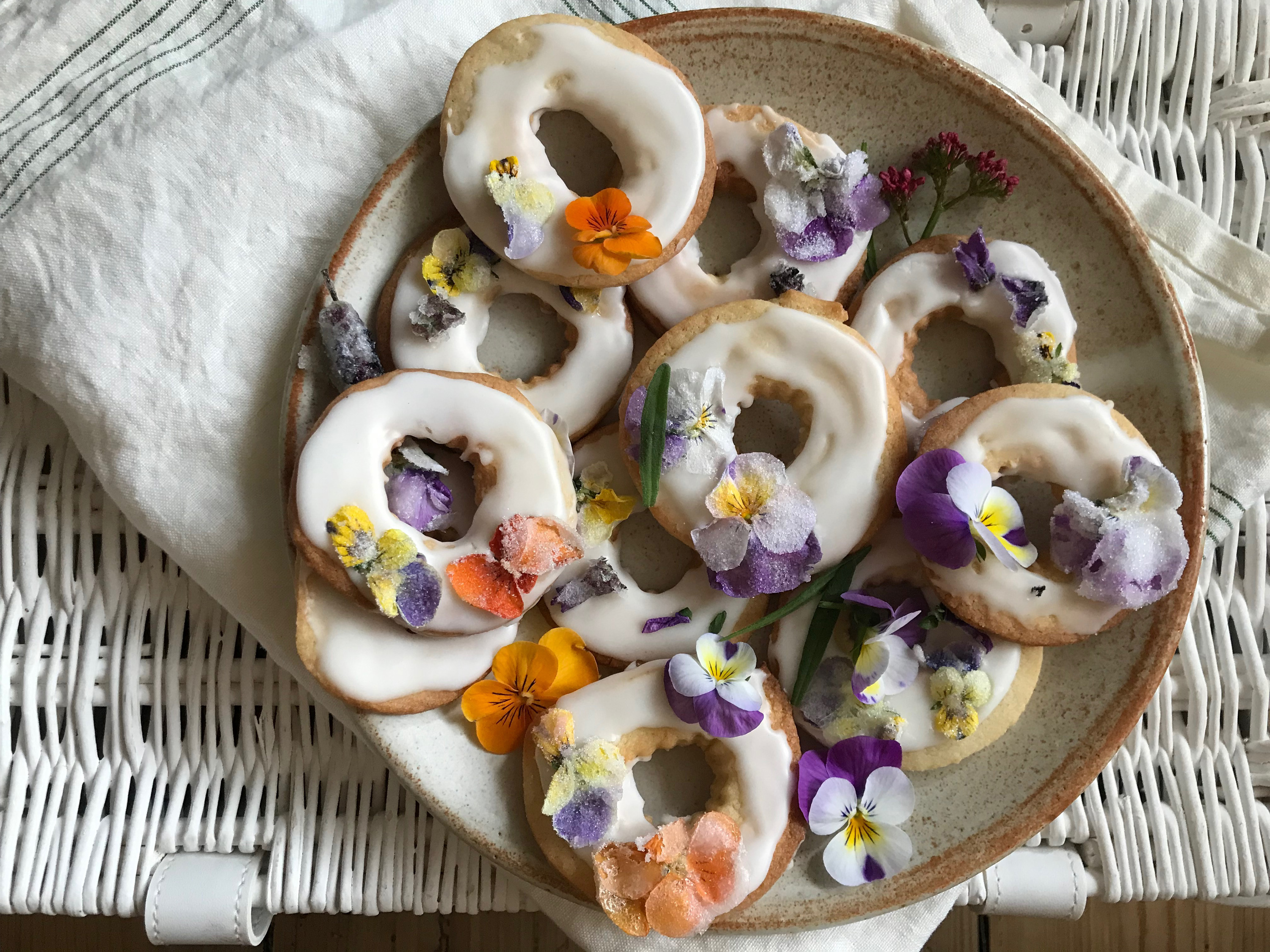
When should you pick edible flowers?
Whether you're picking lavender, lilacs, or another beautiful bloom, collect them early in the morning when the flavors will be more intense. Once picked, it's a good idea to allow them to sit undisturbed for a while so that any pollen beetles and other insects can crawl away.
If you're not using the flowers straightaway, you can store them in the fridge in a plastic bag until you are ready to add them to a dish. Most should last for a couple of days, although some more delicate blooms, like forget-me-nots, are best enjoyed as soon as possible.
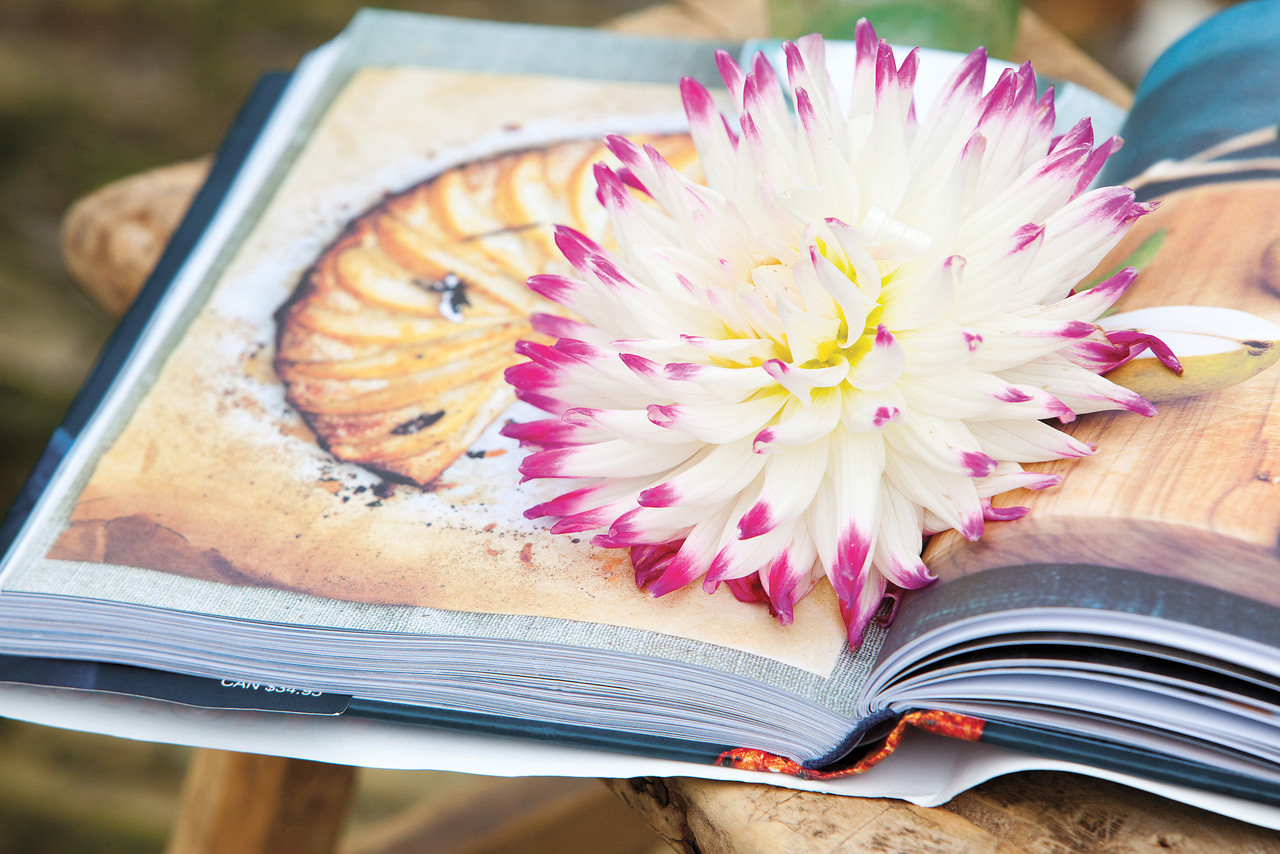
How to wash edible flowers
If you need to wash the flowers, dip them in a bowl of cold water and gently shake dry, or carefully pat with kitchen towel.
Some will not survive the washing process if they are delicate.

How to prepare edible flowers
Usually, only the petals of the flower are palatable, so remove the stamens, pistil, and calyx. Hayfever sufferers should avoid eating the stamen of the flower (where pollen is produced).
However, with some types you can eat the whole flower, seeds, and even the leaves – nasturtiums, for instance – so it does depend on what you're growing.
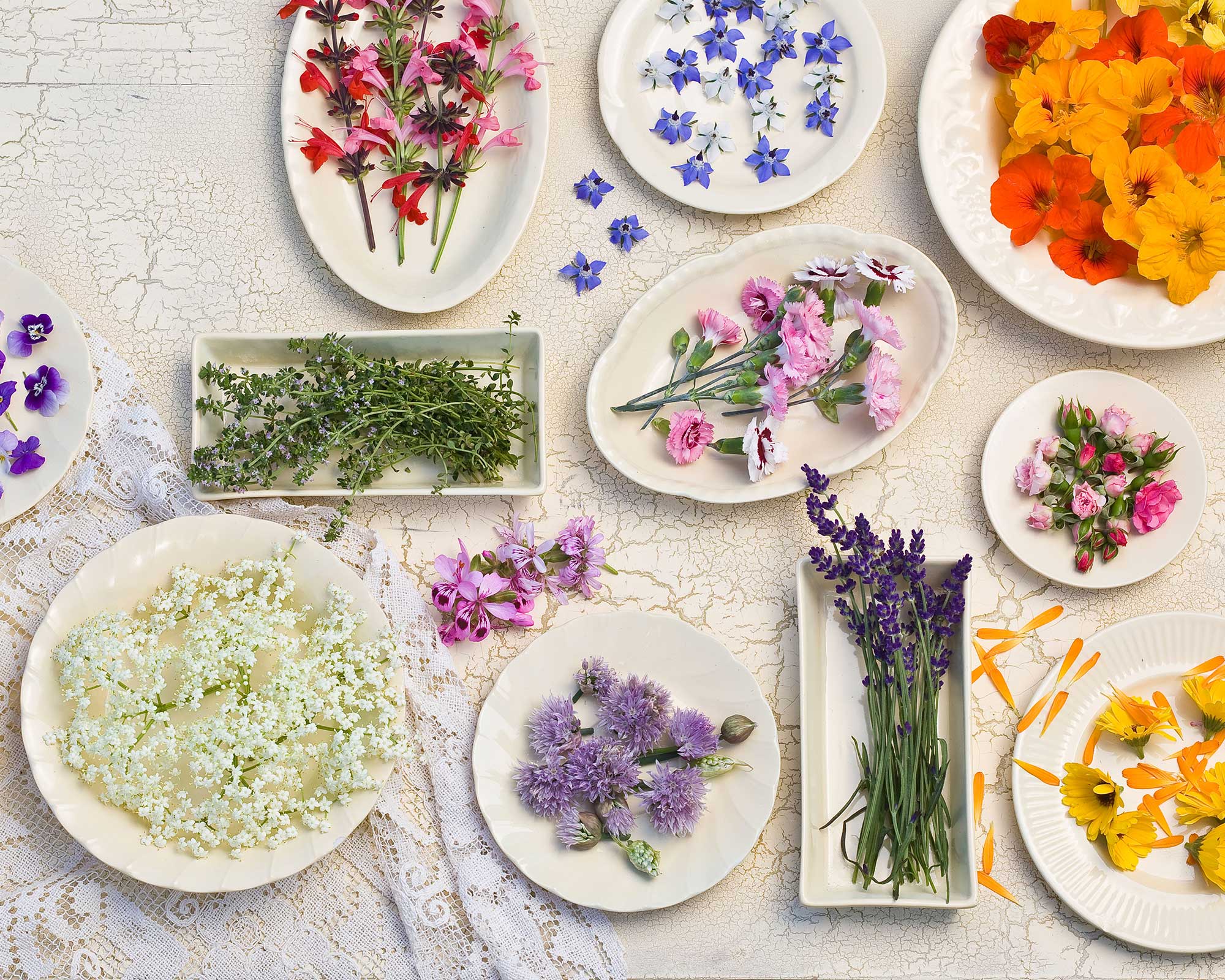
What are the best flowers for decorating a cake?
Lots of flowers are edible and look fabulous gently pressed into the icing of a cake – positioned as a centerpiece on your outdoor table, it's a wonderful way to make a garden party feel extra special.
For whole flowers, opt for primroses, lilacs, or violas; and for colorful petals, go for fragrant types of roses, cornflowers, pinks, or marigolds.
And don't forget, many edible flowers (including borage and sweet violets) can be crystallized before being used as cake decorations which will help them last longer.

What flowers can you not eat?
Some flowers may be pretty and decorative, but are also toxic, so avoid them at all costs. Always do your own research before eating any flower, and if in doubt about its identity, it's best not to risk it.
There are some common poisonous flowers which should be kept well away from the kitchen. For example, don't ever eat daffodils, buttercups, anemones, morning glory, sweet peas, foxgloves, poppies, clematis, hydrangea, oleander, larkspur, or lily of the valley.
Beware of consuming flowers from newly-purchased plants that may have been grown with pesticides and, of course, don’t use chemicals when growing your own edible flowers. It's also best to avoid picking wildflowers (such as elder and chicory) by roads, as they may have absorbed traffic fumes.
There are some poisonous plants for dogs, too – our guide is full of advice to help keep your four-legged friends safe.

An experienced freelance journalist, editor and columnist writing for national magazines and websites, Fiona now specialises in gardens. She enjoys finding and writing about all kinds, from the tiniest town plots to impressively designed ones in grand country houses.
